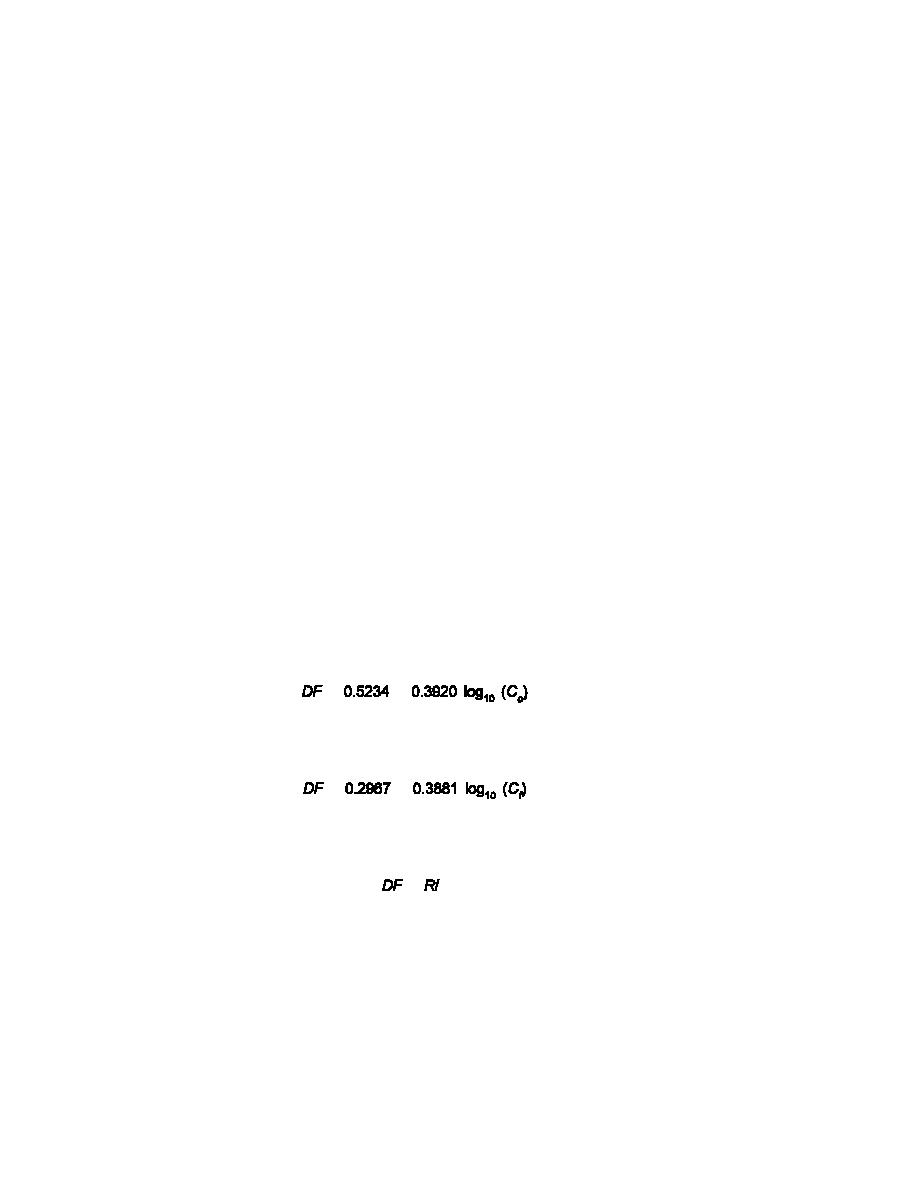
UFC 3-260-02
30 June 2001
(4) Modulus of soil reaction. In Westergaard-type solutions, the modulus of soil reaction k
characterizes the foundation support under a rigid pavement. Consequently, the modulus of soil
reaction k has been used extensively to define the supporting value of all unbound subgrade and base-
course materials and all soils that have been additive-modified (TM 5-822-14/AFM 32-1019). The k
value has been determined by the field plate bearing test as described in CRD-C 655. When elastic-
layered procedures are used for pavements in which only information on modulus of soil reaction k is
available, a correlation between the modulus of elasticity E and modulus of soil reaction k may be
employed. Figure 19-2 shows such a correlation for subgrade soils. Figure 19-2 should be used with
caution as the correlation was developed based on very limited data.
5.
DESIGN CRITERIA.
a. The limiting stress (fatigue) criteria form the backbone of the design of rigid airfield pavements.
The criteria provide for a prediction of pavement deterioration in terms of a structural condition index
(SCI). The SCI is derived from a pavement condition index (PCI) as presented in ASTM D 5340. The
SCI is defined as
SCI ' PCI -- All nonload&related deducts
The SCI prediction is based on a relationship between design factor and stress repetitions for initial
cracking (SCI = 100) and for complete failure (SCI = 0). It is assumed to be linearly related to the
logarithm of coverages between initial cracking and complete failure, which results in the relationship
illustrated in Figure 19-3.
b. The thickness of the PCC is so selected that the maximum tensile stress at the bottom of the
slab does not exceed the allowable value. The criteria are presented as a relationship between design
factor, the SCI, and the logarithm (to the base ten) of coverages by the equations:
'
%
(19-1)
and
'
%
(19-2)
and the design factor is defined as
F
(19-3)
'
where
DF = design factor computed with elastic-layered method
R = concrete slab flexural strength, MPa (psi)
19-7



 Previous Page
Previous Page
